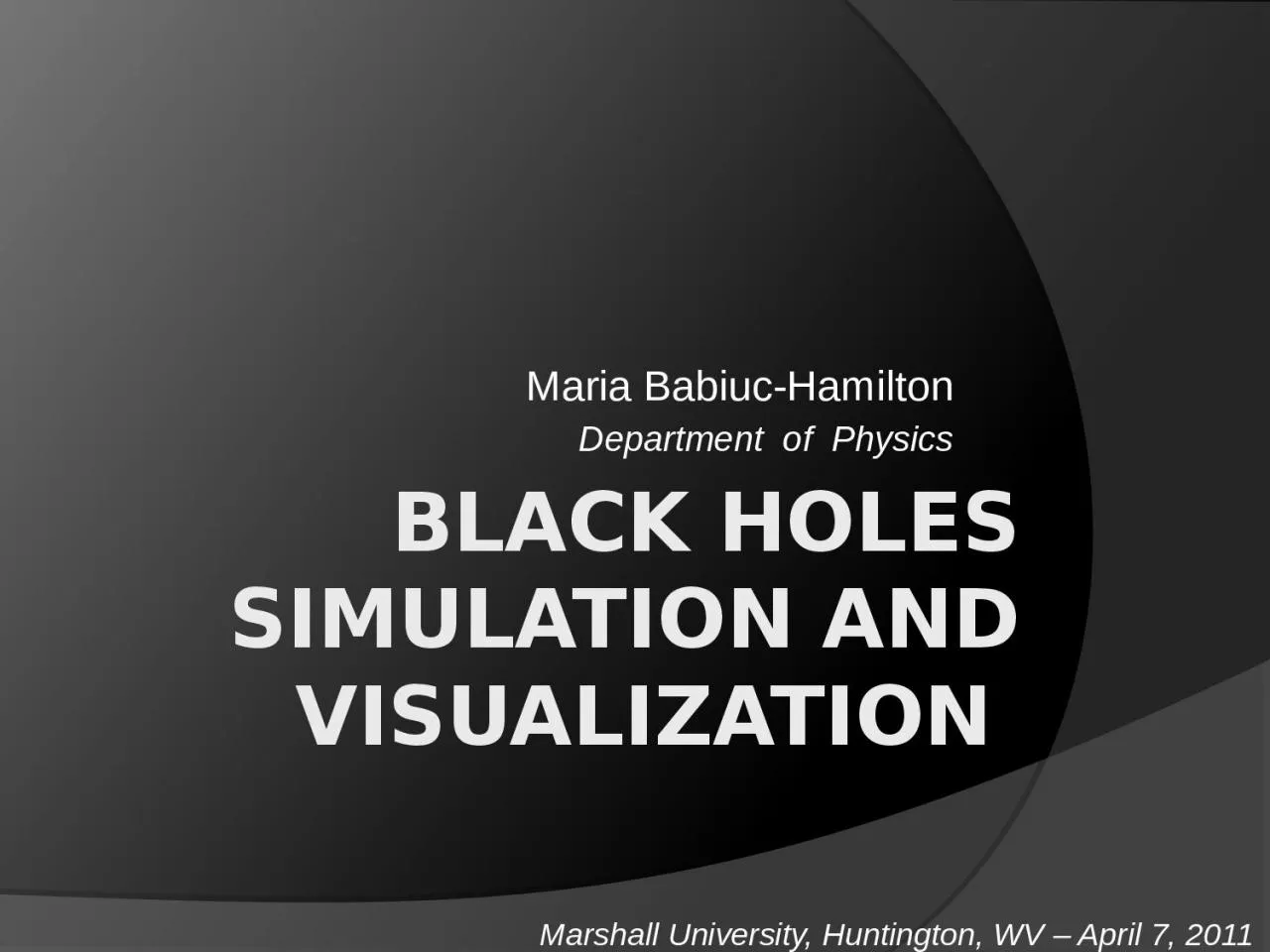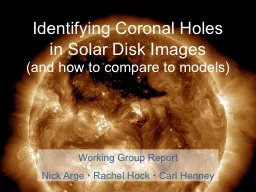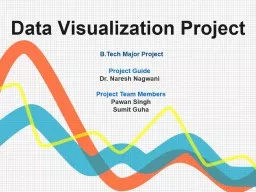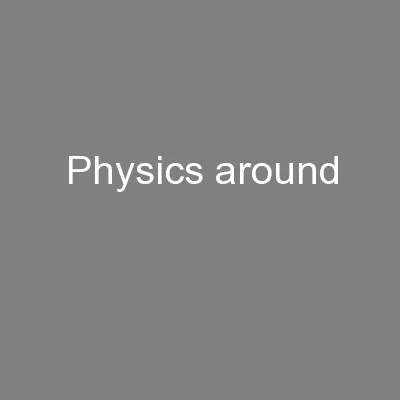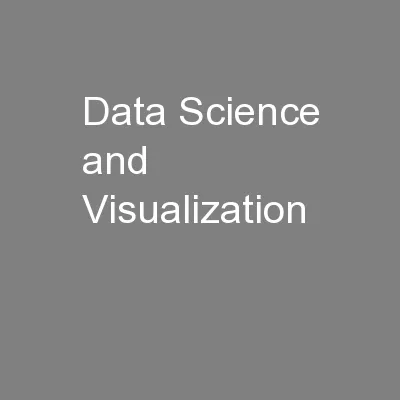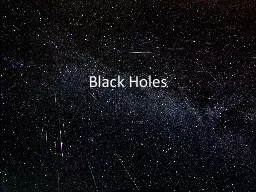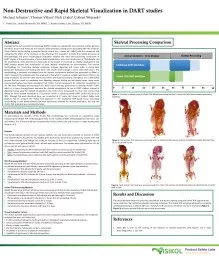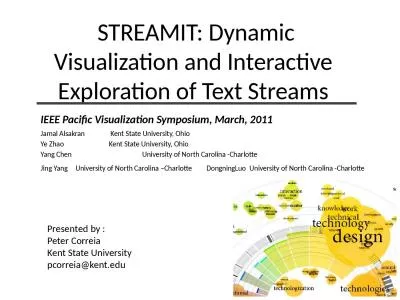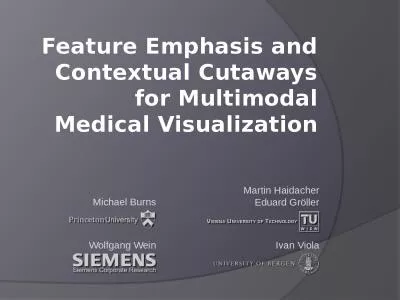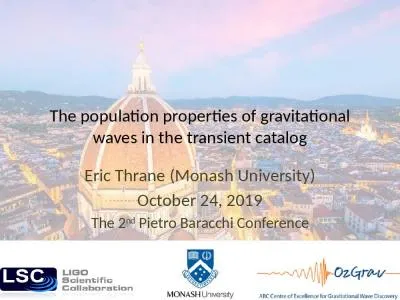PPT-BLACK HOLES SIMULATION and visualization
Author : reagan | Published Date : 2024-02-02
Maria BabiucHamilton Department of Physics Marshall University Huntington WV April 7 2011 The Elusiveness Of Gravity What is Gravity Not an attraction force
Presentation Embed Code
Download Presentation
Download Presentation The PPT/PDF document "BLACK HOLES SIMULATION and visualizatio..." is the property of its rightful owner. Permission is granted to download and print the materials on this website for personal, non-commercial use only, and to display it on your personal computer provided you do not modify the materials and that you retain all copyright notices contained in the materials. By downloading content from our website, you accept the terms of this agreement.
BLACK HOLES SIMULATION and visualization: Transcript
Download Rules Of Document
"BLACK HOLES SIMULATION and visualization"The content belongs to its owner. You may download and print it for personal use, without modification, and keep all copyright notices. By downloading, you agree to these terms.
Related Documents

